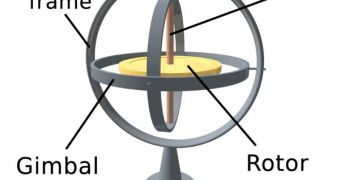Gyroscopes are perhaps some of the most well-known toys in the world, as they were all the rage for children living in the 20th century. They were used for a variety of applications, ranging from replacing magnetic compasses to helping stabilize satellites in orbit, but now the main goal in the field is to reduce their sizes, so as to allow for them to be used in consumer devices. A group of European researchers has just managed an innovation in the field that could see tiny gyroscopes used for personal navigation and vehicle stabilization tools in the near future, ScienceDaily reports.
One of the main steps that led to this achievement was the development of very small MEMS (micro-electro-mechanical system) gyroscopes. However, these instruments could not be readily used on account of the fact that a method of insulating, or shielding them, from their operating environment had not yet been devised. This is absolutely essential if the small structures are to have any shot at commercial success. It was the goal of the DAVID project, a EU-funded initiative, to fix this problem. Experts from five countries looked at methods of reducing the costs associated with the miniaturization and packaging of the gyroscopes.
The goal was the production of hybrid integrated devices that would include both mechanical and electronic components. “To create a gyroscope effect for measuring motion in a vehicle or even a pedestrian, you have to provide a moving structure inside a very, very small device and this means combining the mechanical movement with some very sophisticated electronics. As the device will be embedded in a vehicle electronics system, or even eventually a mobile phone, it needs to be self-contained and continue operating for many years,” Norman Marenco, who has been the coordinator for the entire DAVID project, says.
Ideally, the MEMS devices should be placed inside a vacuumed chamber. However, some air pressure is needed to keep the components in touch with each other, so there is friction between them. This equals wear, and the researchers realized the importance of creating individual coating materials for each of the tiny gyroscopes. The team managed to achieve its objectives by employing a wafer-to-wafer (W2W) approach, which allowed them to create electronic and mechanic components that were tightly bound to each other, therefore communicated through strong signals. Major chip manufacturer STMicroelectronics, the industrial partner of the project, already started manufacturing chips based on the new technology.

 14 DAY TRIAL //
14 DAY TRIAL //